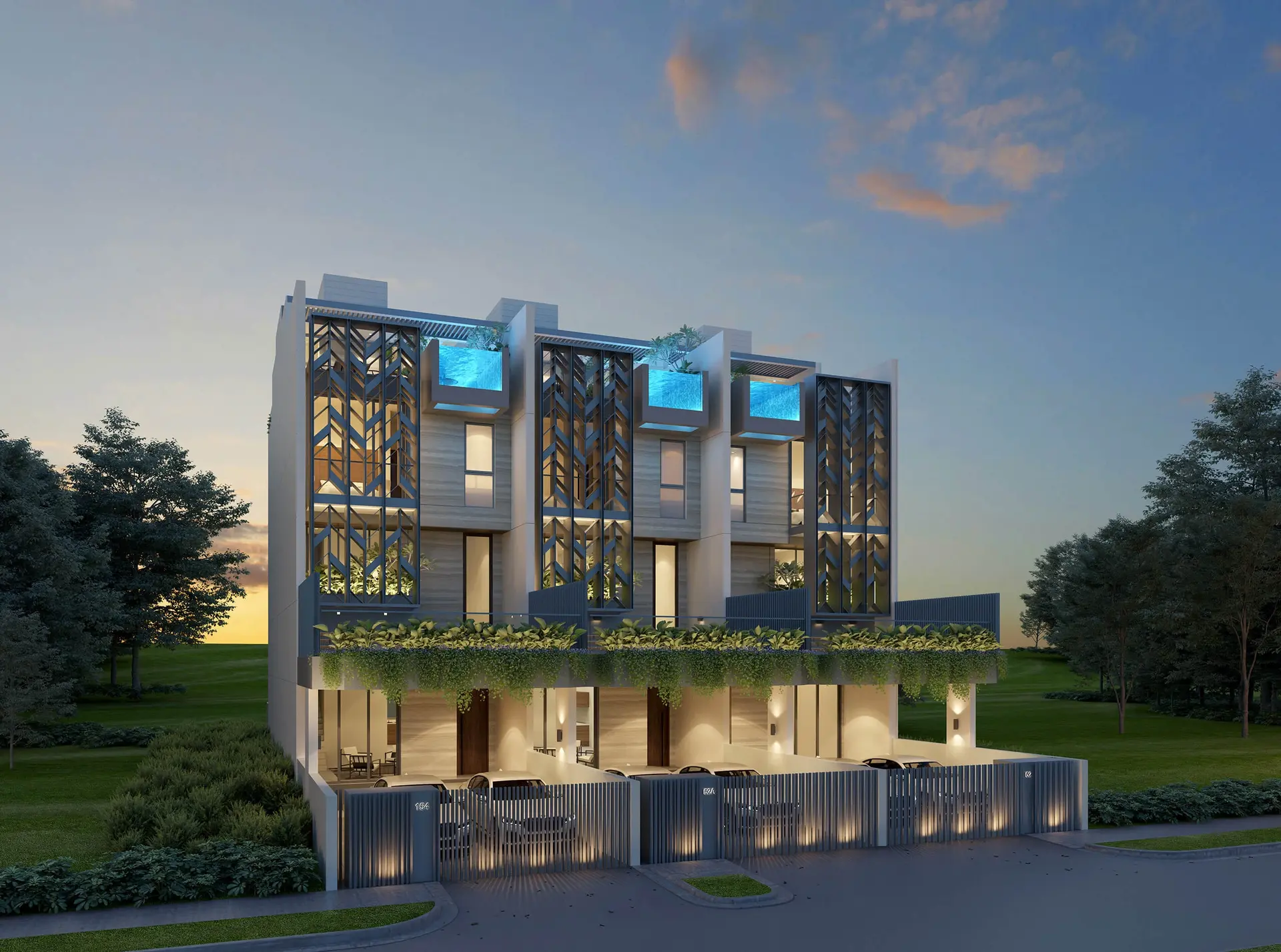FAQ
What is envelope control for landed property?
Each landed home is “allocated” a certain number of floors by the government via envelope control. If the land is zoned for 3 floors, for example, you can build up to 3 floors, plus an attic. If the land is zoned for 2 floors, you’ll have to make do with 2 floors and an attic.
What is the difference between A&A and redevelopment?
A&A involves different intensities of renovation work, while reconstruction is rebuilding involving tearing down the property. It is considered reconstruction if the total floor area of the new house is more than 50% of the existing total floor area. The two also differ in government planning submission requirements.
Are there any gross floor area/plot ratio limitations imposed by the government on my home?
The Urban Redevelopment Authority (URA) of Singapore manages land use intensity through plot ratio limitations, which is used to calculate the maximum Gross Floor Area (GFA) of a property. For example, a property with a plot ratio of 1.4 and a land site area of 2000 sqft will be allowed a maximum GFA of 2400 sqft. Detailed plot ratio information of various properties in different locations can be found on the URA Space website.
What are the important factors to consider when deciding which landed properties suitable for redevelopment?
Landed properties intersected by the government’s Road Reserve Line can be adversely affected as its land size can be reduced upon redevelopment.
Any building protrusions into the road reserve must be removed upon redevelopment of the land. You can however include the affected land area in subsequent plot ratio calculations for the new development.
You can purchase a Road Line Plan from LTA via the Integrated Land Information Services (INLIS) website to check if a property is affected by the road reserve.
What is envelope control for landed property?
Each landed home is “allocated” a certain number of floors by the government via envelope control. If the land is zoned for 3 floors, for example, you can build up to 3 floors, plus an attic. If the land is zoned for 2 floors, you’ll have to make do with 2 floors and an attic.
What is the difference between A&A and redevelopment?
A&A involves different intensities of renovation work, while reconstruction is rebuilding involving tearing down the property. It is considered reconstruction if the total floor area of the new house is more than 50% of the existing total floor area. The two also differ in government planning submission requirements.
Are there any gross floor area/plot ratio limitations imposed by the government on my home?
The Urban Redevelopment Authority (URA) of Singapore manages land use intensity through plot ratio limitations, which is used to calculate the maximum Gross Floor Area (GFA) of a property. For example, a property with a plot ratio of 1.4 and a land site area of 2000 sqft will be allowed a maximum GFA of 2400 sqft. Detailed plot ratio information of various properties in different locations can be found on the URA Space website.
What are the important factors to consider when deciding which landed properties suitable for redevelopment?
Landed properties intersected by the government’s Road Reserve Line can be adversely affected as its land size can be reduced upon redevelopment.
Any building protrusions into the road reserve must be removed upon redevelopment of the land. You can however include the affected land area in subsequent plot ratio calculations for the new development.
You can purchase a Road Line Plan from LTA via the Integrated Land Information Services (INLIS) website to check if a property is affected by the road reserve.
What is envelope control for landed property?
Each landed home is “allocated” a certain number of floors by the government via envelope control. If the land is zoned for 3 floors, for example, you can build up to 3 floors, plus an attic. If the land is zoned for 2 floors, you’ll have to make do with 2 floors and an attic.
What is the difference between A&A and redevelopment?
A&A involves different intensities of renovation work, while reconstruction is rebuilding involving tearing down the property. It is considered reconstruction if the total floor area of the new house is more than 50% of the existing total floor area. The two also differ in government planning submission requirements.
Are there any gross floor area/plot ratio limitations imposed by the government on my home?
The Urban Redevelopment Authority (URA) of Singapore manages land use intensity through plot ratio limitations, which is used to calculate the maximum Gross Floor Area (GFA) of a property. For example, a property with a plot ratio of 1.4 and a land site area of 2000 sqft will be allowed a maximum GFA of 2400 sqft. Detailed plot ratio information of various properties in different locations can be found on the URA Space website.
What are the important factors to consider when deciding which landed properties suitable for redevelopment?
Landed properties intersected by the government’s Road Reserve Line can be adversely affected as its land size can be reduced upon redevelopment.
Any building protrusions into the road reserve must be removed upon redevelopment of the land. You can however include the affected land area in subsequent plot ratio calculations for the new development.
You can purchase a Road Line Plan from LTA via the Integrated Land Information Services (INLIS) website to check if a property is affected by the road reserve.
